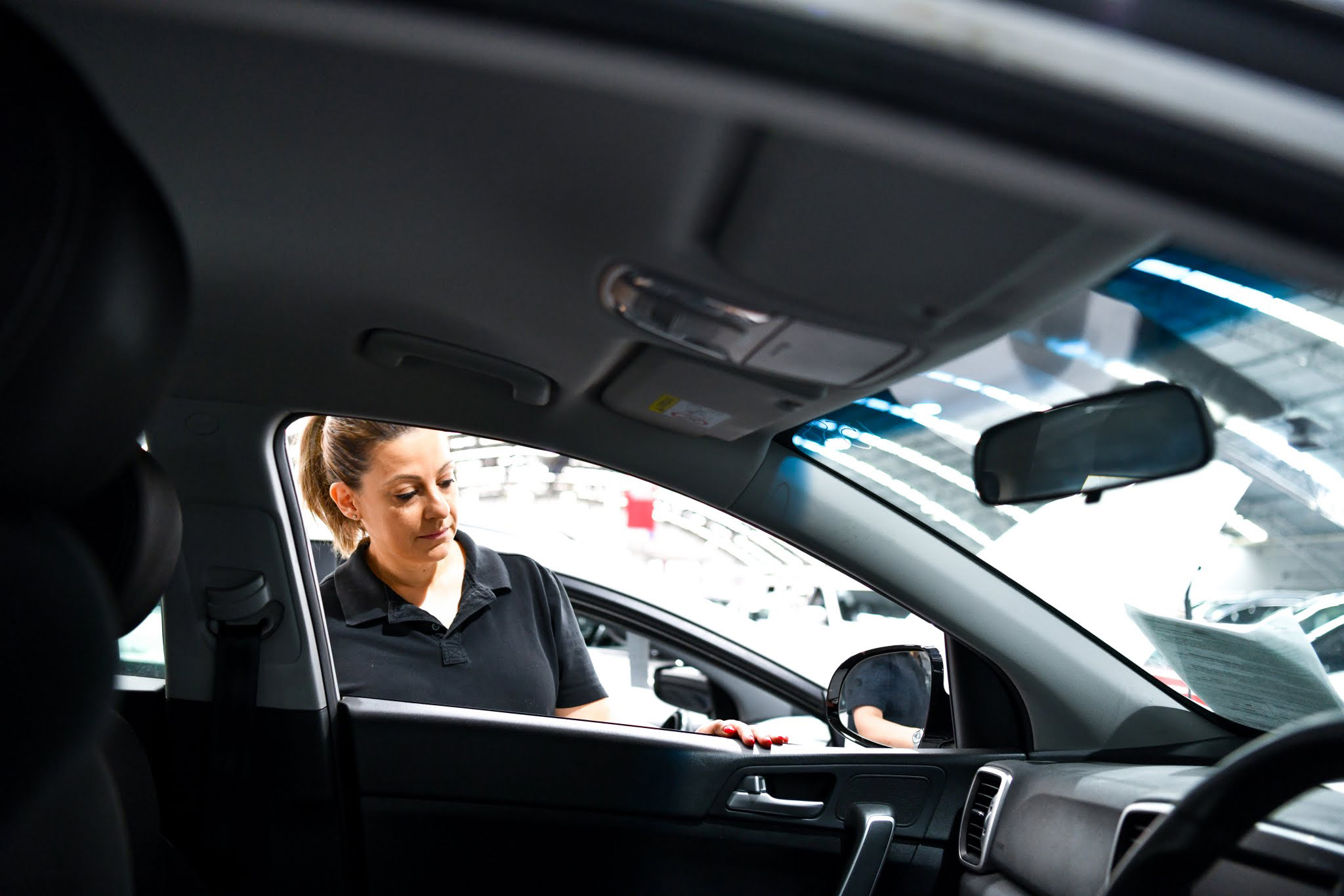If you’re in the market for a car, you’ve probably heard a number of terms being thrown around about car safety. Apart from the obvious – seatbelts and airbags – what should you look for when purchasing a car?

Safety features have come a long way since the invention of the automobile. Features that protect the driver and passengers in the event of a crash, like seatbelts and airbags, have saved many lives and prevented many injuries. As technology progresses, there is now an additional focus on autonomous and semi-autonomous technology that assists the driver and can proactively prevent accidents.
Car safety features fall into three major categories:
- Structural integrity
- Passive safety features
- Safety assist technologies
Structural integrity refers to how the shell of a vehicle withstands and channels crash forces away from passengers. For example, the dash, steering column, doors and roof should absorb the force of the crash and channel it away from the occupants.
Passive safety features refer to the built-in safety features such as airbags, ABS (anti-lock braking system), ESC (electronic stability control) and seat belts.
Safety assist technologies are the semi-autonomous and autonomous safety technologies which assist the driver in avoiding or reducing the severity of a crash. These include blind spot monitoring, AEB (autonomous emergency braking) and LKA (active lane keep assist).
Safety features explained
Airbags
Airbags are triggered when crash sensors detect a collision thereby protecting passengers from being slammed into the front or side of the vehicle.
Seatbelt
The humble seatbelt is in all cars and for good reason; they prevent passengers from flying forward. All vehicles are now required to have a LATCH system (lower anchors and tethers for children) to make child restraints easier to install.
Anti-lock Braking System
ABS prevents the wheels from locking when braking therefore helping the driver stay in control and able to steer. ABS is fitted to just about every new car these days.
Electronic Stability Control
ESC kicks in when it detects the vehicle travelling in an unintended direction. Braking power will be applied and engine power manipulated to return the vehicle to a straight line, thereby reducing the chance of a driver swerving and being involved in a crash.
Brake Assist
The vehicle will apply extra braking power when the driver hits the brakes suddenly but not at full pressure.
Automatic Emergency Braking
AEB helps to alert drivers of an imminent crash and provides braking power should a driver not heed the warning. It works by scanning what’s ahead or pedestrian movement in relation to the path of the vehicle to determine the risk of collision.
Blind spot warning
In addition to side mirrors, some vehicles are fitted with lights which flash to alert you of a car in your blind spot or make audible noises. This is generally an optional feature.
Speed assistance
There are a number of speed assistance technologies. A very simple features is an audible alert when a driver accelerates beyond a pre-set speed. More advanced technology allows the vehicle to automatically press the brakes thereby reducing the vehicle’s speed.
These are just some of the safety features to look out for. We get hundreds of vehicles every week, a number of which have a 5-star ANCAP safety rating.
Still on the hunt for the perfect car? Read our pick of the best SUVs, hatchbacks, sedans and 4x4s.
18 Sep